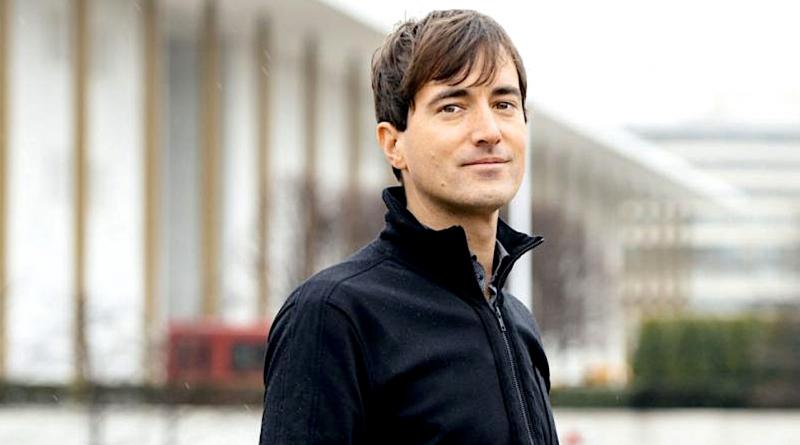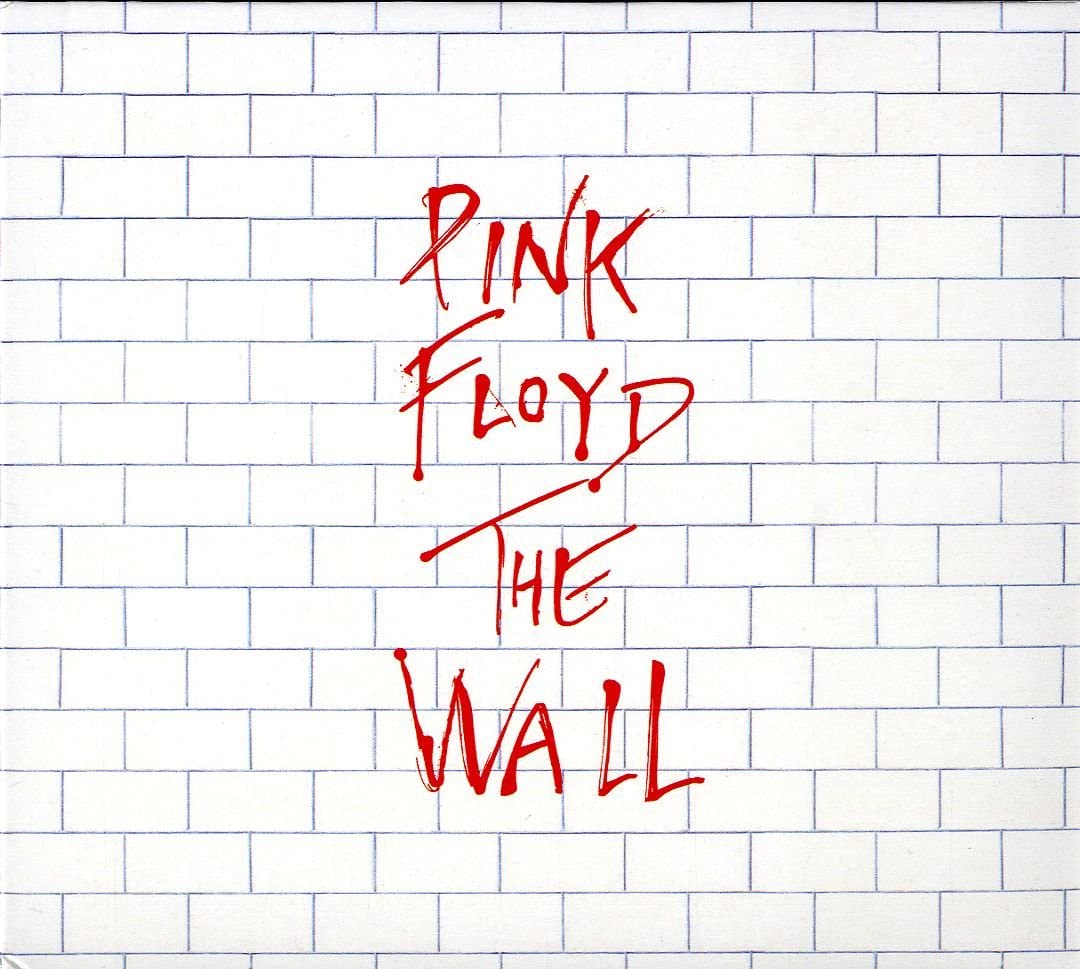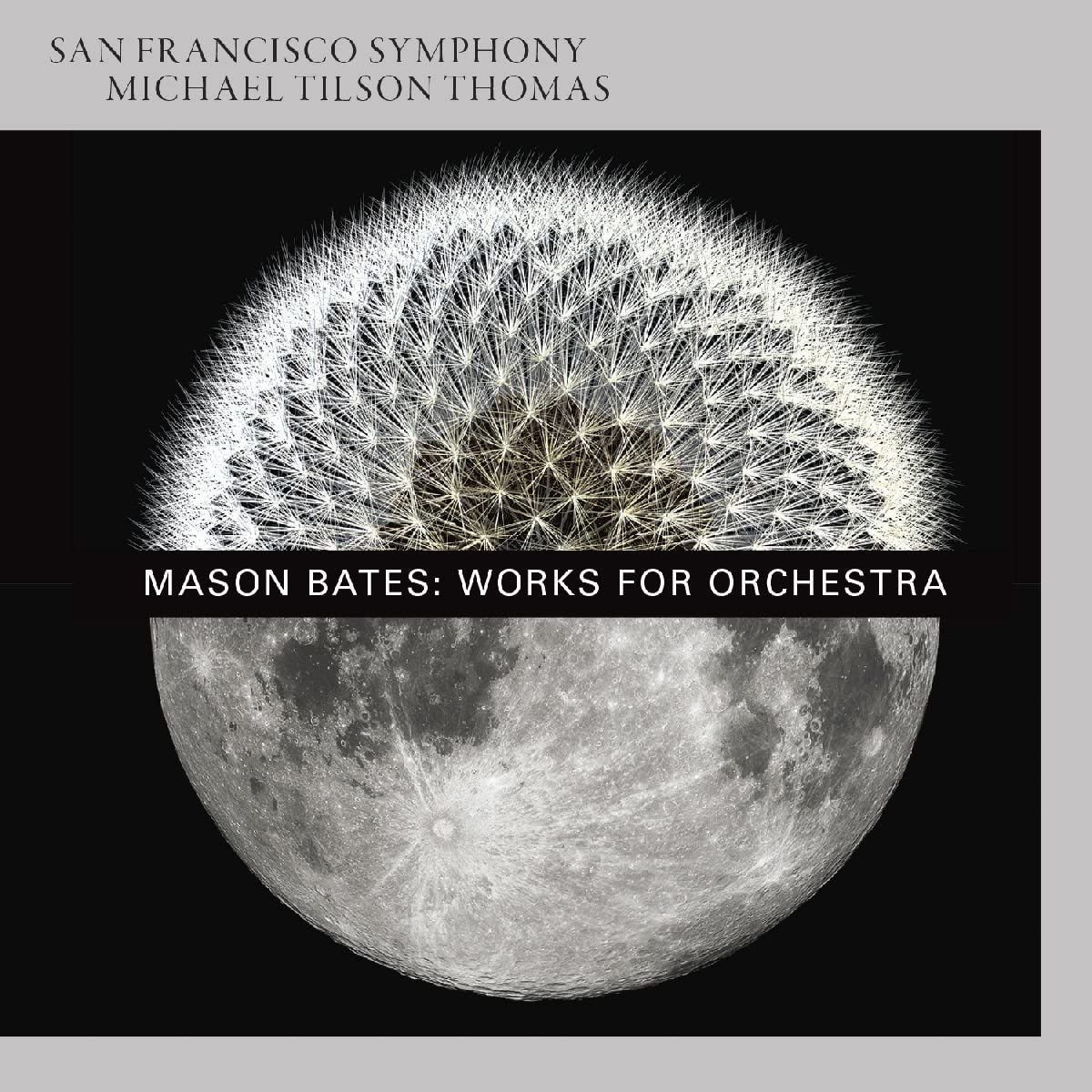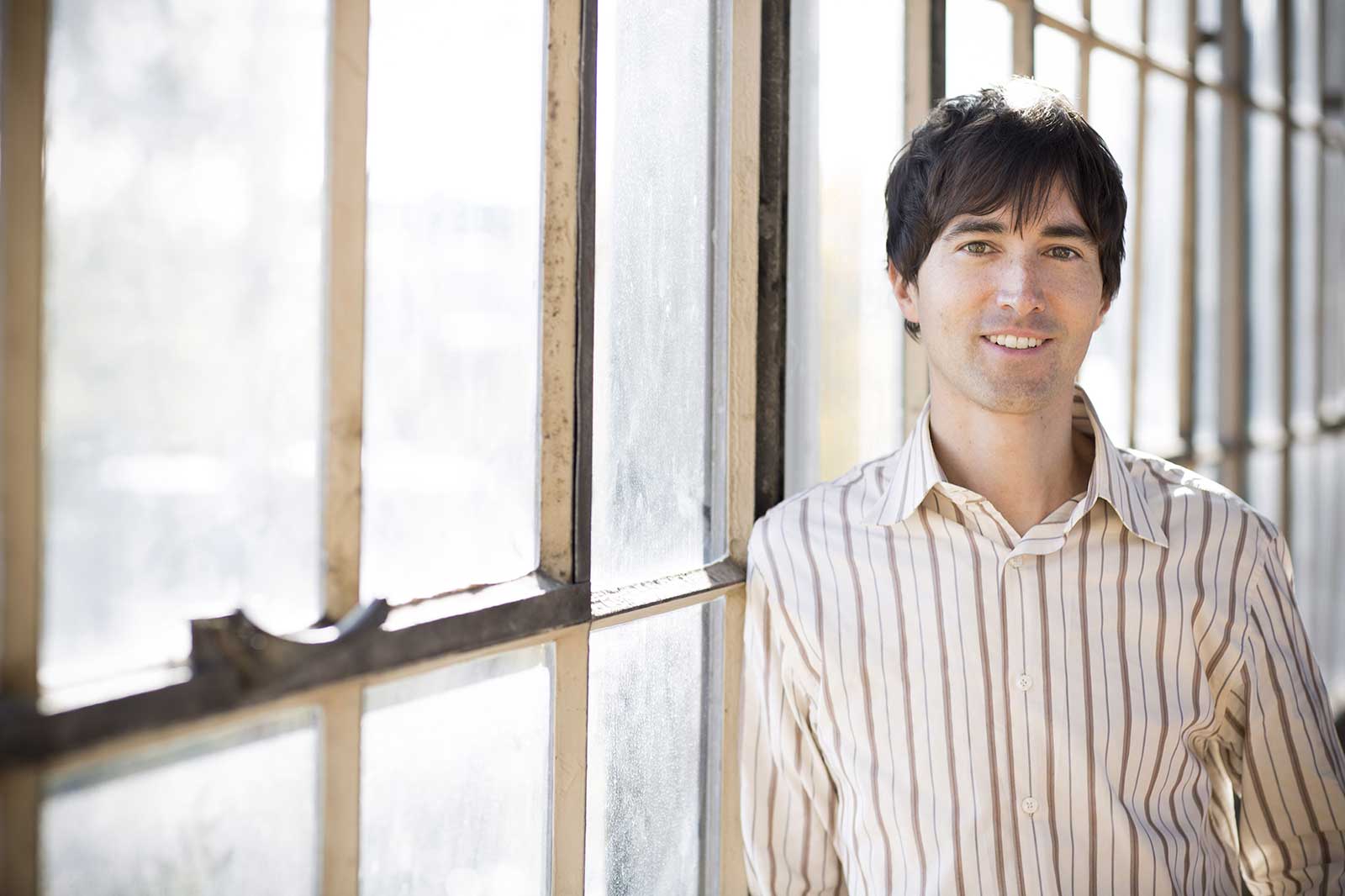First Person: composer Mason Bates on the powers and perils of musical storytelling | reviews, news & interviews
First Person: composer Mason Bates on the powers and perils of musical storytelling
First Person: composer Mason Bates on the powers and perils of musical storytelling
From Beethoven to Pink Floyd and 'Liquid Interface', premiered in the UK on Wednesday

What do Beethoven and Pink Floyd have in common?
Narrative – ingeniously animated by music.
From the Ninth Symphony to The Wall, narrative music has brought a new dimension to the forms and genres it has touched.
Musical storytelling is on my mind this month as the London Philharmonic Orchestra performs Liquid Interface, my first large-scale exploration of musical narrative in the form of a “water symphony”. Premiered at the Kennedy Center for the Performing Arts in 2007, the work features watery orchestral textures and electronic sounds that range from field recordings of glaciers calving, to trip-hop beats built out of water samples.
While the surface of Liquid Interface has many new elements, the programmatic approach dates to the 19th Century. But spokes of it have shot in all directions, including into the world of rock opera.
 The birth of programme music was very far from English psychedelic masters Roger Waters and David Gilmour. It occurred the moment the chorus started singing in the premiere of Beethoven Nine. Before that moment, symphonies didn’t come with lyrics.
The birth of programme music was very far from English psychedelic masters Roger Waters and David Gilmour. It occurred the moment the chorus started singing in the premiere of Beethoven Nine. Before that moment, symphonies didn’t come with lyrics.
The abstract nature of symphonic form shattered with the inclusion of a chorus, which is both a musical as well as dramatic element. The sound of the human voice immediately triggers a sympathetic response, and the words Beethoven set further resonate with the theme of goodwill and unity.
Thanks to Beethoven, a symphony now could be about something.
The Wall similarly exploded the possibilities of its genre. Waters and Gilmour built an entire double-album around a single concept: emotional walls created by psychological isolation. Like the inclusion of a chorus in the Ninth Symphony, this “concept album” approach used innovations on both the musical and formal level. Animating the poetic underpinning of The Wall is complex sound design and orchestral sonorities which link song to song.
The advent of the “concept album” provoked accusations of pretentiousness not unlike the 19th Century debate about “programmatic music” versus “pure music”. Beethoven’s heirs, from Berlioz to Wagner, would point to the Ninth’s vocal writing as evidence that the great master saw a musical future less based on traditional forms in favor of tone poems. To the narrative composers, why use a stodgy title such as Symphony No 1 when you could use Symphonie Fantastique? Brahms didn’t agree – as well as others – and a great (and productive) debate raged.
 The basic challenge of narrative music is balancing the musical surface and dramatic storyline. The music needs to feel fresh and compelling even if the listener doesn’t read the programme note. When Liquid Interface [also featured on a CD of Bates's music with Michael Tilson Thomas conducting the San Francisco Symphony, pictured right] was given its Korean premiere in Seoul, I was very curious how the work would be received by an audience reading a program only containing the title, Liquid Interface, and movement titles (I. Glaciers Calving - II. Scherzo Liquido - III. Crescent City - IV. On the Wannsee).
The basic challenge of narrative music is balancing the musical surface and dramatic storyline. The music needs to feel fresh and compelling even if the listener doesn’t read the programme note. When Liquid Interface [also featured on a CD of Bates's music with Michael Tilson Thomas conducting the San Francisco Symphony, pictured right] was given its Korean premiere in Seoul, I was very curious how the work would be received by an audience reading a program only containing the title, Liquid Interface, and movement titles (I. Glaciers Calving - II. Scherzo Liquido - III. Crescent City - IV. On the Wannsee).
As you can see, a lot of information can be tucked into titles. But still, the music needs its own standalone logic; otherwise there is the risk of a “connect-the-dots” sound. For me, the narrative needs to be hard-wired to specific, clear musical ideas.
For example, the slow movement, “Crescent City”, explores the destructive power of water. The title refers both to California’s Crescent City, which was hit by a large tsunami in the 1960s, and to the nickname of New Orleans. The movement uses a kind of Dixieland swing motif that echoes the primary theme. As the movement builds, this echoing motif adds more and more instruments, eventually becoming a powerful wake behind the main theme. The climax moves from a musical hurricane into a processed field recording of one.
The Seoul audience was incredible. One after another, people came backstage to talk about that movement’s cumulative build from playful Dixieland to tragic destruction. Having a simple musical logic articulate the drama is quite useful in narrative music.
But like many artistic endeavours, it is the execution that ultimately defines the work. Look at the moment the chorus bursts into “Ode to Joy”: after a tentative turn to minor mode, the harmony triumphantly turns to a bright D major, with the full orchestra ablaze with a tune of folk-song simplicity. Or you could look at Beethoven and Liszt’s depictions of Prometheus, the mythological figure who stole fire from the heavens. Liszt uses novel orchestral effects to evoke fire, staggering violent accents across the strings to create an explosive musical surface. [The composer pictured below by Todd Rosenberg] In short, the musical surface of any narrative endeavor needs to stand on its own. Far away from Beethoven, on another side of the musical universe, is the song “Another Brick in the Wall Part II”. Even to someone who doesn’t understand the full meaning of the words (for example, Mason at 10), the basic songwriting is undeniably powerful. Hooks are everywhere, spooky sound design mixes with a kids' chorus, and there’s that awesome guitar solo. And then you start to peel apart the lyrics.
In short, the musical surface of any narrative endeavor needs to stand on its own. Far away from Beethoven, on another side of the musical universe, is the song “Another Brick in the Wall Part II”. Even to someone who doesn’t understand the full meaning of the words (for example, Mason at 10), the basic songwriting is undeniably powerful. Hooks are everywhere, spooky sound design mixes with a kids' chorus, and there’s that awesome guitar solo. And then you start to peel apart the lyrics.
It took me a long time to realize that both 19th Century programmatic composers and English psychedelic rock powerfully informed my narrative symphonic approach. My first attempts used electronic sounds firmly in the world of techno and trip-hop – ie, beats that I was encountering as a DJ. A big epiphany was the understanding that electronics can do so much more than rhythm: they can take you to Antarctica or the outer atmosphere of Earth. In a sense, digital sounds can behave similarly to the percussion section – both rhythm (a snare drum) and stagecraft (a wind machine).
After a century of symphonic music defined by processes – from serialism to minimalism – I find it exhilarating to reexamine the programmatic approach with 21st Century sounds. Getting an orchestra to sync with digital sounds is not easy, but for me a world of imaginative possibilities awaits on the other side.
Share this article
The future of Arts Journalism
You can stop theartsdesk.com closing!
We urgently need financing to survive. Our fundraising drive has thus far raised £49,000 but we need to reach £100,000 or we will be forced to close. Please contribute here: https://gofund.me/c3f6033d
And if you can forward this information to anyone who might assist, we’d be grateful.

Subscribe to theartsdesk.com
Thank you for continuing to read our work on theartsdesk.com. For unlimited access to every article in its entirety, including our archive of more than 15,000 pieces, we're asking for £5 per month or £40 per year. We feel it's a very good deal, and hope you do too.
To take a subscription now simply click here.
And if you're looking for that extra gift for a friend or family member, why not treat them to a theartsdesk.com gift subscription?
more Classical music
 Hallé John Adams festival, Bridgewater Hall / RNCM, Manchester review - standing ovations for today's music
From 1980 to 2025 with the West Coast’s pied piper and his eager following
Hallé John Adams festival, Bridgewater Hall / RNCM, Manchester review - standing ovations for today's music
From 1980 to 2025 with the West Coast’s pied piper and his eager following
 Kaploukhii, Greenwich Chamber Orchestra, Cutts, St James's Piccadilly review - promising young pianist
A robust and assertive Beethoven concerto suggests a player to follow
Kaploukhii, Greenwich Chamber Orchestra, Cutts, St James's Piccadilly review - promising young pianist
A robust and assertive Beethoven concerto suggests a player to follow
 Robin Holloway: Music's Odyssey review - lessons in composition
Broad and idiosyncratic survey of classical music is insightful but slightly indigestible
Robin Holloway: Music's Odyssey review - lessons in composition
Broad and idiosyncratic survey of classical music is insightful but slightly indigestible
 Classical CDs: Wolf-pelts, clowns and social realism
British ballet scores, 19th century cello works and contemporary piano etudes
Classical CDs: Wolf-pelts, clowns and social realism
British ballet scores, 19th century cello works and contemporary piano etudes
 Bizet in 150th anniversary year: rich and rare French offerings from Palazzetto Bru Zane
Specialists in French romantic music unveil a treasure trove both live and on disc
Bizet in 150th anniversary year: rich and rare French offerings from Palazzetto Bru Zane
Specialists in French romantic music unveil a treasure trove both live and on disc
 Scottish Chamber Orchestra, Ibragimova, Queen’s Hall, Edinburgh review - rarities, novelties and drumrolls
A pity the SCO didn't pick a better showcase for a shining guest artist
Scottish Chamber Orchestra, Ibragimova, Queen’s Hall, Edinburgh review - rarities, novelties and drumrolls
A pity the SCO didn't pick a better showcase for a shining guest artist
 Kilsby, Parkes, Sinfonia of London, Wilson, Barbican review - string things zing and sing in expert hands
British masterpieces for strings plus other-worldly tenor and horn - and a muscular rarity
Kilsby, Parkes, Sinfonia of London, Wilson, Barbican review - string things zing and sing in expert hands
British masterpieces for strings plus other-worldly tenor and horn - and a muscular rarity
 From Historical to Hip-Hop, Classically Black Music Festival, Kings Place review - a cluster of impressive stars for the future
From quasi-Mozartian elegance to the gritty humour of a kitchen inspection
From Historical to Hip-Hop, Classically Black Music Festival, Kings Place review - a cluster of impressive stars for the future
From quasi-Mozartian elegance to the gritty humour of a kitchen inspection
 Shibe, LSO, Adès, Barbican review - gaudy and glorious new music alongside serene Sibelius
Adès’s passion makes persuasive case for the music he loves, both new and old
Shibe, LSO, Adès, Barbican review - gaudy and glorious new music alongside serene Sibelius
Adès’s passion makes persuasive case for the music he loves, both new and old
 Anja Mittermüller, Richard Fu, Wigmore Hall review - a glorious hall debut
The Austrian mezzo shines - at the age of 22
Anja Mittermüller, Richard Fu, Wigmore Hall review - a glorious hall debut
The Austrian mezzo shines - at the age of 22
 First Person: clarinettist Oliver Pashley on the new horizons of The Hermes Experiment's latest album
Compositions by members of this unusual quartet feature for the first time
First Person: clarinettist Oliver Pashley on the new horizons of The Hermes Experiment's latest album
Compositions by members of this unusual quartet feature for the first time

Add comment